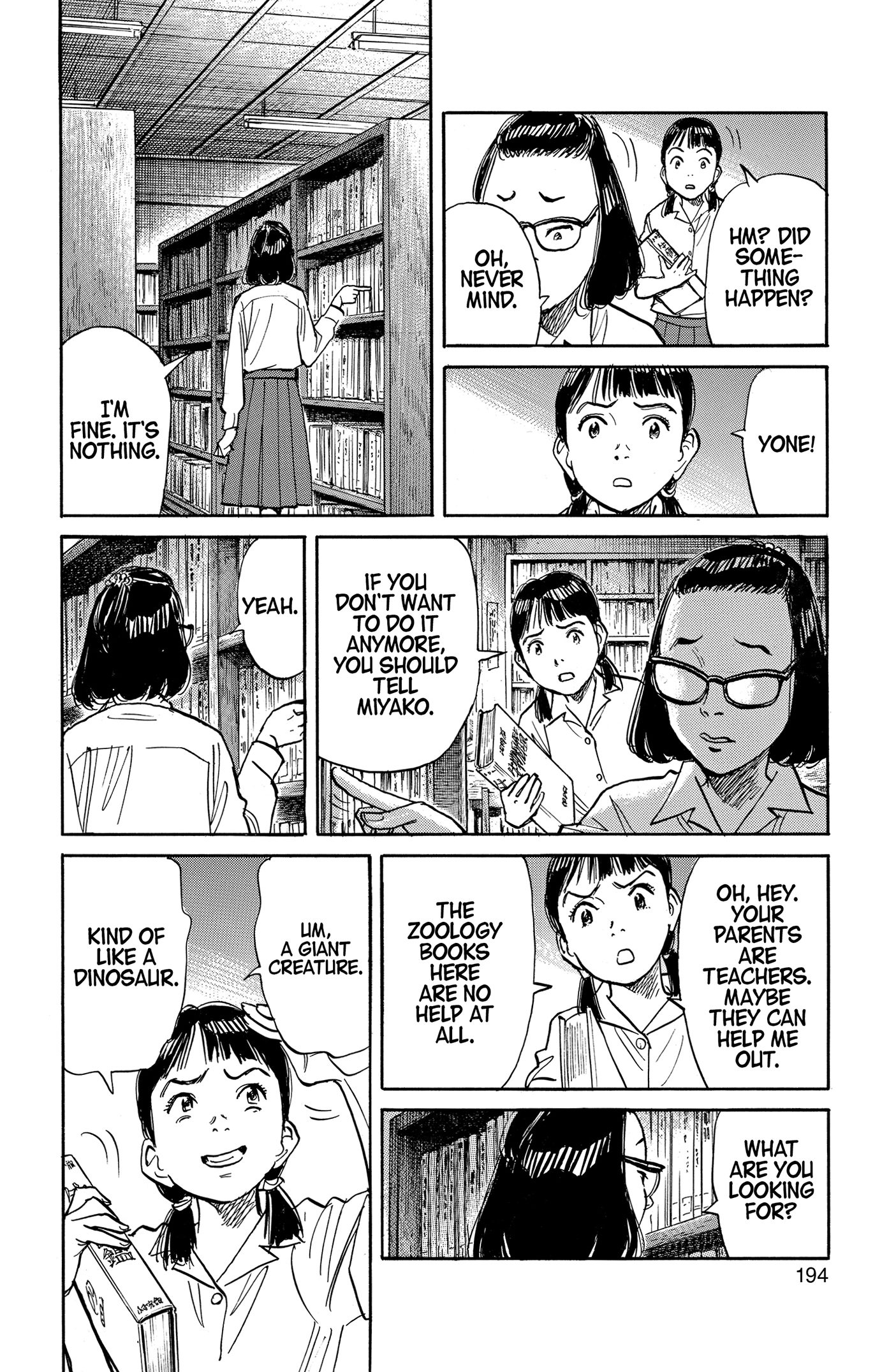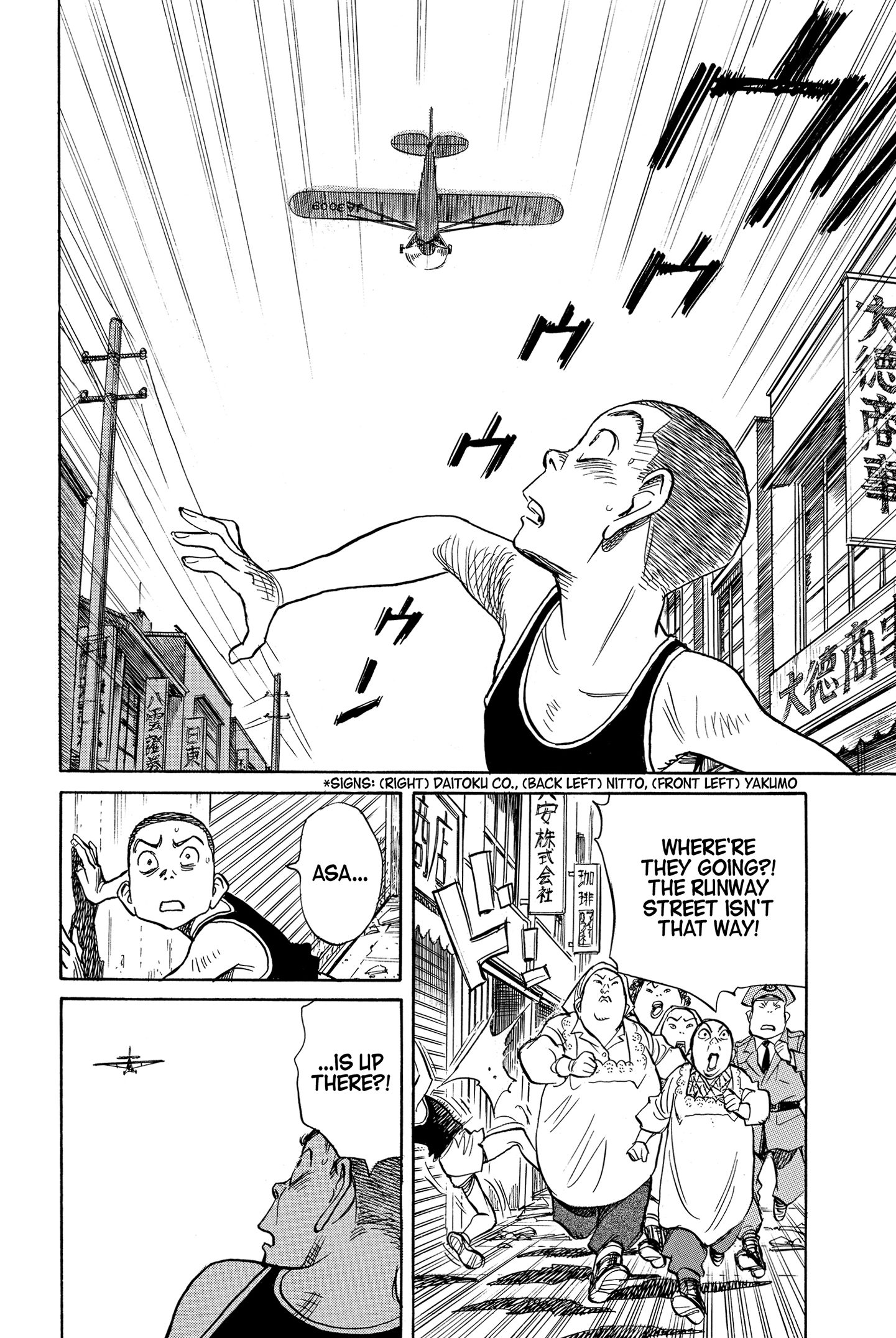What separates Naoki Urasawa from his contemporaries—both in the “big in western countries” sense and “manga creators of his generation” sense—is his all-encompassing command of verisimilitude. No matter how melodramatic or outlandish the setting, be it Monster’s fairly grounded psychological horror, 20th Century Boys’ era-spanning thrills, or Pluto’s decompressed, ultra-fatalistic sci-fi, Urasawa's pacing, linework, and especially his and his assistants’ inking, are not only striking but manage to convey the action’s weight and realism.
So it is with Asadora! Begun in 2018 in the pages of Shogakukan’s weekly Big Comic Spirits magazine, Asadora! currently stands at seven English-translated volumes, with an eighth out now in Japan and due in translation this November from VIZ (a subsidiary of Shogakukan and its sister company Shueisha, as it happens). Compared to the acclaim and plaudits racked up Stateside by Monster and Pluto, this series has gone somewhat under the radar. A shame, really, because Asadora! is more than equal to those.
The story begins in 2020 with Japan under siege by some sort of kaiju. We then flash back to 1959 where, as the Isewan Typhoon (Typhoon Vera) prepares to rain down on the Port of Nagoya, a young girl runs through sheets of rain for a doctor: her mother is about to give birth for the 12th time. Such is our introduction to Asa Asada, annoyed at her name1 and her large family that struggles to survive in postwar Japan yet remains fiercely protective and confident. After the doctor flat-out refuses to help, noting that her mom’s “an old hand at this,” Asa storms off wearing a raincoat with the name of the doctor’s clinic on it. Along the way, she meets her classmate Shota - who, despite the storm, is training to qualify as a runner for the 1964 Tokyo Olympics (his two older brothers’ hopes having been dashed by the war). Then Asa is kidnapped by a destitute veteran pilot, Kasuga, who sees her raincoat and thinks she’s a doctor’s child, and therefore rich.
Then the typhoon hits, with strange, keening cries mixed in with the howling wind; one thing leading to another, Asa and Kasuga wind up using a Piper Cub to airdrop relief packages over the devastated town, where they find not just Asa’s three surviving siblings (including the newborn), but a mysterious... something rising out of the ocean, with a gigantic footprint left in Asa’s neighborhood.
Five years later, Asa flying the Cub with Kasuga for hire, taking part in small-time air shows while attending high school and helping raise her younger siblings. While their provincial city is gripped by Olympic fever, Asa and Kasuga are approached by a fedora-clad man who tells them the monster they saw was real... and it's back.
Anyone familiar with Urasawa’s work knows he’s a sure hand at keeping his settings as detailed and accurate as possible. This is no exception: a quick Google search informs that his renderings of the Isewan Typhoon’s destruction are damn near identical to contemporary disaster photos. The story is further enhanced by the characters dropping ‘60s-appropriate references, with athletes like Abebe Bikila and Kōkichi Tsuburaya drawn in Urasawa’s signature style.
Said style, of course, lends itself to the propulsive melodrama that drives the series. But style only gets you so far; it’s the characters that draw you in. Asa could very easily be The Plucky Heroine, but she’s both discontented and selfish while also earnestly grappling with the weighty responsibilities thrust upon her. As someone who had the same done to him, only to be tossed aside in the aftermath, Kasuga is broken but nonetheless fiercely proud, constantly talking of how he got the men under his command home safe and showing that same care for Asa.2
Even the secondary characters feel fully realized. Asa’s younger siblings are both a fun Greek chorus and have their own struggles, while two of Asa’s would-be pop diva high school friends—the short and short-haired Miyako and the lanky, gawky Yoneko—wind up following their entertainment dreams in very unexpected directions. Yoneko winds up essentially groomed into being a Marilyn Monroe-alike, with all the awkward sadness that implies, while Miyako is saved from assault by a practitioner of joshi puroresu (women’s professional wrestling), and soon aspires to join the field.
The grounded character stuff is so intriguing that one tends to forget about the overarching kaiju plot until it comes back in an enormous way. But besides the typical sweeping splashes and Urasawa’s distinct facial work (from the expressive youngsters to the craggy olds), what stands out for me the most in this series is a decidedly old-school feature VIZ has added for their release.
Older readers may recall the practice of leaving Japanese SFX untranslated on the story pages, with a glossary of translations provided at the end of the book; this is what publishers used to do in lieu of re-drawing sound effects before computer lettering allowed tiny translations to appear alongside SFX. Surprisingly, VIZ has opted to bring the glossary approach back for Asadora! Perhaps, given how huge the SFX are at some points (at times taking up the bulk of a panel), there was no alternative option. But while this may seem initially jarring, it fades away as the reader is, as ever, swept up by the breadth and depth of Urasawa’s quietly, energetically brilliant storytelling.
* * *
- "Asa" literally means “morning,” which is the time of day she was born; the series’ title, "Asadora," meanwhile, is a knowing reference to the telenovela-ish 15-minute “morning drama” that’s aired on Japanese state broadcaster NHK since 1961.
- Urasawa pulls off a pretty interesting trick with Kasuga’s design by drawing him not only as the middle-aged schlub a WWII vet like him would’ve been, but—given his prominent buckteeth and mustache—as a hangdog doppelganger to Iyami, the sleazy breakout character from Fujio Akatsuka’s iconic ‘60s comedy manga Osomatsu-kun.













